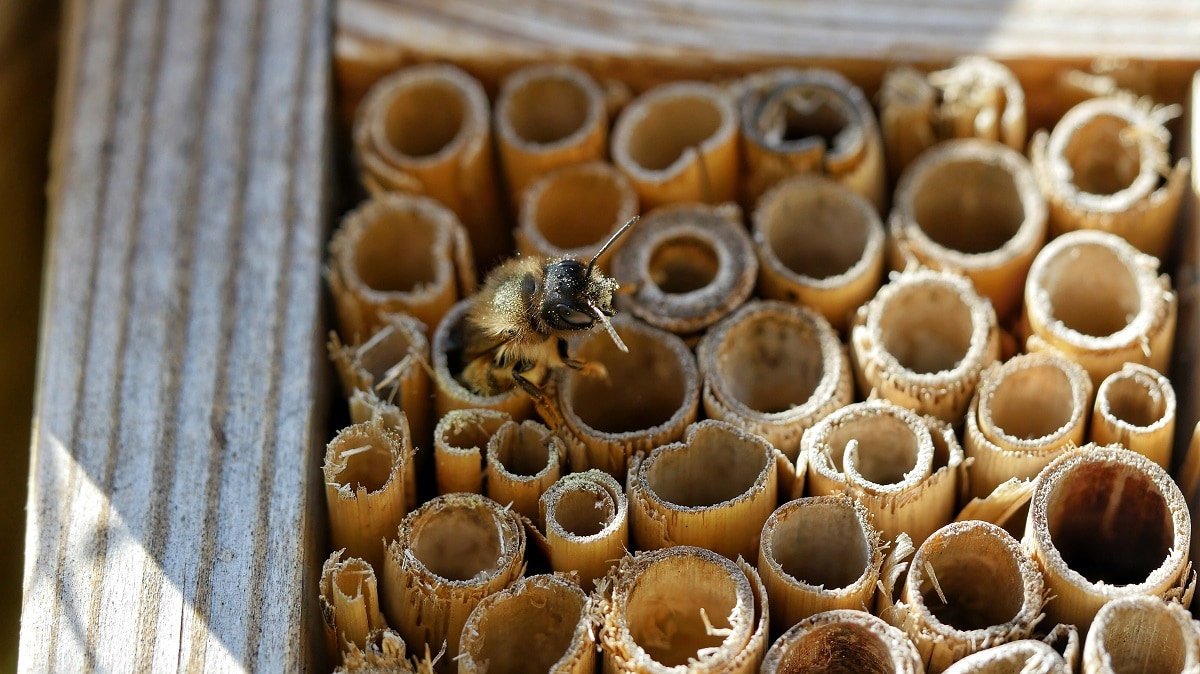by freelance writer Riley Herder
Insect hotels provide refuge for various kinds of insects and pollinators during the harsh months. If you are starting a garden, or live in a neighbourhood with a community garden or p-patch, chances are you have heard of or seen an insect hotel. They are growing in popularity as urban dwellers aim not only to keep sustainable gardens, but also care for the environment by slowing the population decline of the world’s pollinators.
There are many things to know about how insect hotels work and how to maintain them, as well as sustain the critters taking residence in your insect hotel. For starters, know that while some store-bought insect hotels are built with quality and care, many are not. Luckily, for the gardener who loves a good DIY project, there is hope. You can easily build your very own insect hotel and do your part to help the planet and your vegetables.
- A wooden box or recycled bird house with a “roof” or “awning” on top to direct water away from structure
- Hollow bamboo canes, wood chips, rolled paper, thin cardboard tubing, or wooden boards with holes drilled into them
- Hot glue and glue sticks
- A shady spot to hang or mount the structure when finished
>> Looking for help with your garden? Find a gardener now.
Which insects to shelter in your insect hotel?
The first choice you need to make is what kind of beneficial insects are you hoping to provide refuge for. Most commonly, people are interested in bees for pollinating. But there are all kinds of beneficial bugs. Others, like parasitic wasps and ladybugs, are useful for attacking the fruit loving pests like aphids that ruin your fruit trees.
You can place plants strategically around the garden to attract the kinds of insects you want to lend your garden a hand. For your pollinators, try to have numerous pollen-rich flowering plants and bushes. For parasitic wasps, ladybugs and other aphid-destroyers, nectar is the name of the game. Plant carrots, fennel, or other sweet, nectar-rich goodness for them.
Another way to attract beneficial insects is to first attract the not-so-beneficial ones. Plants like lupines can help trap aphids, luring hungry ladybugs and parasitic wasps near to snack on them. Next, you just need to entice them to stick around for the winter, which is where your well-placed DIY insect hotel can be of great service.
Building the home
For reeds and rolled paper tubes (best choices for bees!), cut them all to similar length and set them aside. Use a thin bead of hot glue to secure the tubes into the box. Don’t pack them in too tightly—this can restrict air flow.
If you are also adding sections for wood chips—those are good for aphid-killers, you can arrange them relatively tightly in a square section, secured by a bit of hot glue if needed.
You can cut slits into unfinished pieces of wood for butterflies and lacewings, and place them where desired within the structure as well. There are really no rules to how big or small to make your insect hotel.
When finished, mount or hang the insect hotel in a relatively shady spot in your garden. It is recommended to install your insect hotel in late summer or autumn, so that insects can discover and begin to make it their home before their winter hibernation period begins.
We hope this is a fun project that provides your garden with lots of little helpers, working overtime to help you stay chemical-free.
>> Looking for help with your garden? Find a gardener now.
